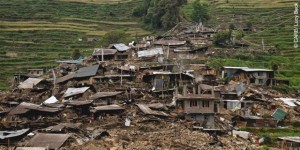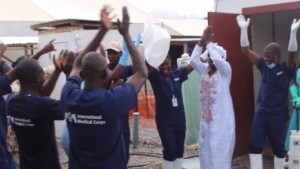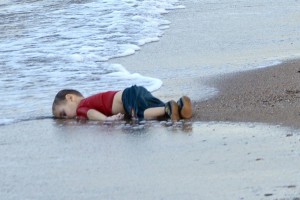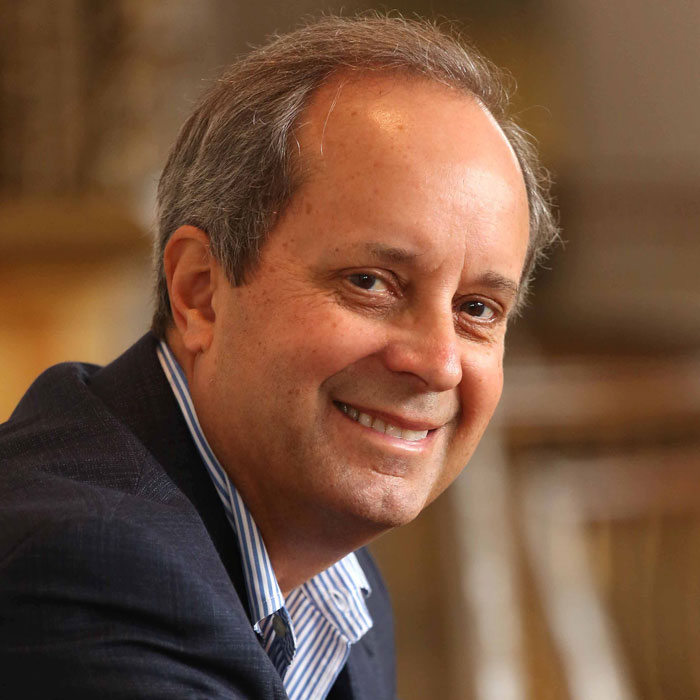Three Images That Stick With Me From 2015
2015 has been a year of disasters that have challenged the response community – those on the front lines, those in the planning desks, and those who are funders. It’s been unique because it hasn’t been just natural disasters that have demanded our attention. The world also confronted Ebola and the largest refugee crisis of […]

2015 has been a year of disasters that have challenged the response community – those on the front lines, those in the planning desks, and those who are funders. It’s been unique because it hasn’t been just natural disasters that have demanded our attention. The world also confronted Ebola and the largest refugee crisis of our generation this year.
The images of these disasters and how people react to them is something that is of great interest to me – it was the topic of another blog I wrote earlier this year. It’s amazing to me the emotion that is often packed into a single picture and how much that one moment of time, frozen before the world, can move people to act. As this year comes to an end, I wanted to take a look at some of 2015’s disasters that have been at the forefront of the Center for Disaster Philanthropy’s workload this year and share some images from those disasters that I’ll always carry with me.
 Nepal Earthquake: Although there were hundreds of natural disasters this year, affecting millions of people, one of the biggest for us was the massive 7.8 magnitude earthquake in Nepal in April. Just a few weeks after the April 25 quake, a second shaking occurred, this one a significant 7.3 magnitude. About 9,000 people died in the earthquakes. Eight months later, hundreds of thousands remain in need of vital humanitarian assistance, and many are still living in makeshift shelters. The recovery situation in Nepal has been complicated in recent months by a trade blockade imposed by India, which has created a fuel, supply and medicine shortage. This picture stays with me, even though you can’t see a single person. The rubble was once homes where families felt safe. And this picture – homes reduced to nothing in areas without easy access to building supplies and families left without shelter – is something repeated across Nepal, as recovery efforts struggled first against monsoon season and then with a political blockade. More than 300 donors contributed to CDP’s Nepal Earthquake Fund and in coming weeks we’ll be reporting on our plans for distribution.
Nepal Earthquake: Although there were hundreds of natural disasters this year, affecting millions of people, one of the biggest for us was the massive 7.8 magnitude earthquake in Nepal in April. Just a few weeks after the April 25 quake, a second shaking occurred, this one a significant 7.3 magnitude. About 9,000 people died in the earthquakes. Eight months later, hundreds of thousands remain in need of vital humanitarian assistance, and many are still living in makeshift shelters. The recovery situation in Nepal has been complicated in recent months by a trade blockade imposed by India, which has created a fuel, supply and medicine shortage. This picture stays with me, even though you can’t see a single person. The rubble was once homes where families felt safe. And this picture – homes reduced to nothing in areas without easy access to building supplies and families left without shelter – is something repeated across Nepal, as recovery efforts struggled first against monsoon season and then with a political blockade. More than 300 donors contributed to CDP’s Nepal Earthquake Fund and in coming weeks we’ll be reporting on our plans for distribution.
 Ebola: Ebola represented another kind of disaster: a complicated, frightening health crisis. Although this latest crisis started towards the end of 2013, as many of our NGO partners noted at the end of last year, the struggle continued well into 2015. The Ebola epidemic infected more than 28,000 and killed more than 11,000 in 10 different countries. For the most part, those cases occurred in Guinea, Liberia, and Sierra Leone. The most cases occurred in Sierra Leone, which is why this image, of Adama Sankoh leaving a hospital in Sierra Leone in August surrounded by cheering medical staff sticks with me. At the time, it was thought that Sankoh’s case was the last in Sierra Leone (later, there were isolated outbreaks. Sierra Leone has been Ebola free since Nov. 7 and is currently in a heightened state of surveillance for the disease). This picture encapsulates the elation of doctors who worked tirelessly against this disease, the face of a survivor, like many others, and yet reminds us how difficult addressing pandemic diseases can be.
Ebola: Ebola represented another kind of disaster: a complicated, frightening health crisis. Although this latest crisis started towards the end of 2013, as many of our NGO partners noted at the end of last year, the struggle continued well into 2015. The Ebola epidemic infected more than 28,000 and killed more than 11,000 in 10 different countries. For the most part, those cases occurred in Guinea, Liberia, and Sierra Leone. The most cases occurred in Sierra Leone, which is why this image, of Adama Sankoh leaving a hospital in Sierra Leone in August surrounded by cheering medical staff sticks with me. At the time, it was thought that Sankoh’s case was the last in Sierra Leone (later, there were isolated outbreaks. Sierra Leone has been Ebola free since Nov. 7 and is currently in a heightened state of surveillance for the disease). This picture encapsulates the elation of doctors who worked tirelessly against this disease, the face of a survivor, like many others, and yet reminds us how difficult addressing pandemic diseases can be.
 Syria and the Refugee Crisis: A third type of crisis we dealt with in 2015 is a long, ongoing humanitarian crisis. The war in Syria has shocked those of us who track humanitarian crises, even as the rest of the world paid scant attention. That all changed when the world saw a single picture of a three-year-old Syrian toddler named Aylan, drowned on a Turkish beach. Aylan and his family had fled violence in Syria. Unable to make ends meet in Turkey, they paid the smuggler network for passage to Greece, hoping to eventually make it to extended family in Canada. The weeks that followed brought a flood of questions from funders. How should they respond? Could they make a difference? Was the situation too widespread and political (read some of CDP’s blogs and information on the refugee crisis)? This situation, intensified a few weeks later by the attacks in Paris, continues to worsen. It is the crisis at the forefront of discussion and debate as we close out this year and enter the next. The image is sharp and painful and full of uncertainty. The image propelled us and several partners to launch the CDP 2015 Refugee Crisis Fund to leverage mid- and long-term efforts in a crisis that is difficult to navigate. It is this image – one that defines the moral and security crisis of the decade – that is most definitely worth a moment to pause and promise in that pause to work diligently for a better world.
Syria and the Refugee Crisis: A third type of crisis we dealt with in 2015 is a long, ongoing humanitarian crisis. The war in Syria has shocked those of us who track humanitarian crises, even as the rest of the world paid scant attention. That all changed when the world saw a single picture of a three-year-old Syrian toddler named Aylan, drowned on a Turkish beach. Aylan and his family had fled violence in Syria. Unable to make ends meet in Turkey, they paid the smuggler network for passage to Greece, hoping to eventually make it to extended family in Canada. The weeks that followed brought a flood of questions from funders. How should they respond? Could they make a difference? Was the situation too widespread and political (read some of CDP’s blogs and information on the refugee crisis)? This situation, intensified a few weeks later by the attacks in Paris, continues to worsen. It is the crisis at the forefront of discussion and debate as we close out this year and enter the next. The image is sharp and painful and full of uncertainty. The image propelled us and several partners to launch the CDP 2015 Refugee Crisis Fund to leverage mid- and long-term efforts in a crisis that is difficult to navigate. It is this image – one that defines the moral and security crisis of the decade – that is most definitely worth a moment to pause and promise in that pause to work diligently for a better world.
We want to thank all of you for your commitment to work with us in finding solutions in helping so many in need across the world. As we pause to reflect on the holiday season, we are more resolved than ever to make a difference in 2016.
